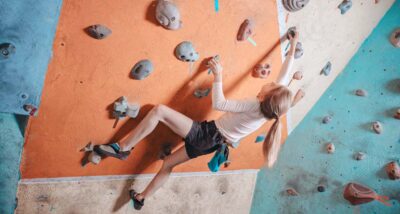Originally published Dec. 20, 2017 by District Administration.
By Ray Bendici District Administration, January 2018
School districts are elevating physical education standards and expanding athletic activities beyond traditional sports to provide a more well-rounded education as required by the Every Student Succeeds Act.
Instead of old favorites such as dodgeball and basketball, many districts have introduced more individually focused activities such as rock climbing, cross-training and yoga.
“We are seeing new physical education now because the ultimate goal is to prepare students to be active and healthy for a lifetime,” says Carly Wright, senior manager of advocacy for SHAPE America, the Society of Health and Physical Educators.
“Most adults who stay physically active don’t participate in team sports, so the goal is to expose students to as many different kinds of physical activities as possible.”
States addressing chronic absenteeism in federal accountability plans should consider that healthier, active students are more likely to attend school, says Wright.
Defining physical literacy
SHAPE America’s national standards define what a physically literate student should be able to do:
- Demonstrate competency in a variety of motor skills and movements.
- Apply to performance in class the knowledge of concepts, principles, strategies and tactics related to movement and activity.
- Demonstrate skills to maintain a health-enhancing level of physical activity and fitness.
- Exhibit responsible personal and social behavior.
- Recognize the value of physical activity for health, enjoyment, challenge, self-expression and social interaction.
Approaches vary
ESSA has shifted control over physical education and fitness to the states, resulting in a wide range of interpretations and standards. Connecticut, Vermont and Michigan, for example, now include physical education or fitness in federal accountability plans.
Vermont’s new statewide physical education assessment is based around , a noncompetitive tool that measures students against a predetermined healthy fitness zone.
The tool—which tracks aerobic capacity, muscular strength, flexibility and other components—is being field-tested this academic year before formal statewide adoption next year.
Wright suggests using these assessment tools to show students how to improve their fitness levels, but not as the sole basis for grades or teacher accountability.
Michigan has designed state standards for motor skill development and a healthy lifestyle. The state’s fitness program stresses “physical literacy,” which is defined as “the ability to move with competence and confidence in a wide variety of physical activities in multiple environments that benefit the healthy development of the whole person.”
Developing physical educators
The No Child Left Behind era saw a focus on core subjects, such as English and math, often at the cost of physical education instruction. In the wake of that, physical educators have worked hard to get administrative support or PD.
“Often on PD days, they get lumped in with English and science teachers,” says Wright. “They don’t get access to physical education best practices or learn about the great new innovative programs.”
Administrators can look to Title II for funding to improve physical educator PD, she says Kentucky now requires that educators who teach physical or health education be certified, just like teachers of other subjects.
As it is only two years from the introduction of the new ESSA standards, approaches to physical education continue to evolve.
“We’ve seen states address the new standards differently,” says Wright. “But we really don’t know what success looks like quite yet.”



